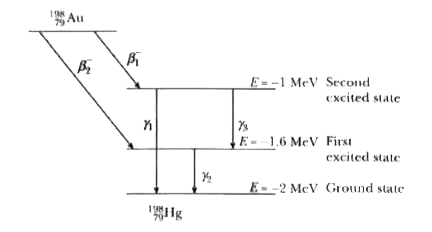A
B
C
D
Text Solution
Verified by Experts
The correct Answer is:
Topper's Solved these Questions
THE NUCLEUS
RESNICK AND HALLIDAY|Exercise PRACTICE QUESTIONS(Matrix - Match)|14 VideosTHE NUCLEUS
RESNICK AND HALLIDAY|Exercise PRACTICE QUESTIONS(Integer Type)|7 VideosTHE NUCLEUS
RESNICK AND HALLIDAY|Exercise PRACTICE QUESTIONS (More than One Correct Choice Type)|22 VideosTHE KINETIC THEORY OF GASES
RESNICK AND HALLIDAY|Exercise PRACTICE QUESTIONS|72 VideosUNITS AND MEASUREMENT
RESNICK AND HALLIDAY|Exercise PRACTICE QUESTIONS (MATRIX-MATCH)|11 Videos
Similar Questions
Explore conceptually related problems
RESNICK AND HALLIDAY-THE NUCLEUS-PRACTICE QUESTIONS (Linked Comprehension)
- Gold nucleus (""(79)^(198)Au) can decay into mercuyr nucleus (""(80)^(...
Text Solution
|
- Gold nucleus (""(79)^(198)Au) can decay into mercuyr nucleus (""(80)^(...
Text Solution
|
- Gold nucleus (""(79)^(198)Au) can decay into mercuyr nucleus (""(80)^(...
Text Solution
|
- We have two radioactive nuclei A and B. Both convert into a stable nuc...
Text Solution
|
- We have two radioactive nuclei A and B. Both convert into a stable nuc...
Text Solution
|
- We have two radioactive nuclei A and B. Both convert into a stable nuc...
Text Solution
|
- In a nuclear fusion reactor, the reaction occurs in two stages (i) Two...
Text Solution
|
- In a nuclear fusion reactor, the reaction occurs in two stages (i) Two...
Text Solution
|
- In a nuclear fusion reactor, the reaction occurs in two stages (i) Two...
Text Solution
|
- Consider the following nuclear decay: ""(92)^(236)Uto""(90)^(232)Th+X ...
Text Solution
|
- Consider the following nuclear decay: ""(92)^(236)Uto""(90)^(234)Th+X ...
Text Solution
|
- Consider the following nuclear decay: ""(92)^(236)Uto""(90)^(234)Th+X ...
Text Solution
|
